Under Pressure: Long-Term Plan Season
Exploring the challenges facing New…
Over the last decade, our team at Veros has grown and thrived not only in the big smoke of our large centres, but also working across regional New Zealand. Our projects and reach now range from Kerikeri in the north to Invercargill in the south. Hailing from the Waimea Plains in the Tasman District, Development Director, Sean Haynes, believes that working in the regions not only fits the personalities of our team but also is deeply aligned with the Veros values and ethos. In this article, Sean explores the lasting impression that the Veros team is leaving on our regions through the successful delivery of significant and transformative projects.
Looking across our team, we have people that have come from right across Aotearoa. From the beaches of Whakatāne, and to riverbanks of Whanganui. Some of team come from small towns like Ōpōtiki and Morrinsville, and others larger provincial centres like Rotorua, Palmy, Whangārei, Havelock North and Nelson. And while the vast majority of our team have cut their teeth and refined their skills on significant projects in international markets and cities, the unique Kiwi approach and values have remained. Regardless of where we originate, we all share common principles that flow through to our company values: be real, make things happen, treat every project as if it were your own, work hard and have fun doing it.
Veros has always largely been a provincial company and we are proud of it. We’ve been successful in regional New Zealand simply because we understand what makes regional areas tick. Balance sheets are generally smaller, resources tend to be scarcer, people and relationships are critically important, and an innovative mindset is essential. It’s under these sorts of scenarios where we really thrive, and our team genuinely enjoy their work.
The variance in our work isn’t just limited to geographic location. The range of projects is just as broad as the area over which they cover, from housing capacity analysis in Levin, to spatial planning studies in Waipukurau, and property business cases in Ashburton. We’ve been at every beach with a surf life saving club in New Zealand undertaking their national property assessment programme from Kerikeri to Bluff. We are carrying out an exciting range of projects for an equally diverse range of clients, and we are pleased to share the details of few of them with you.
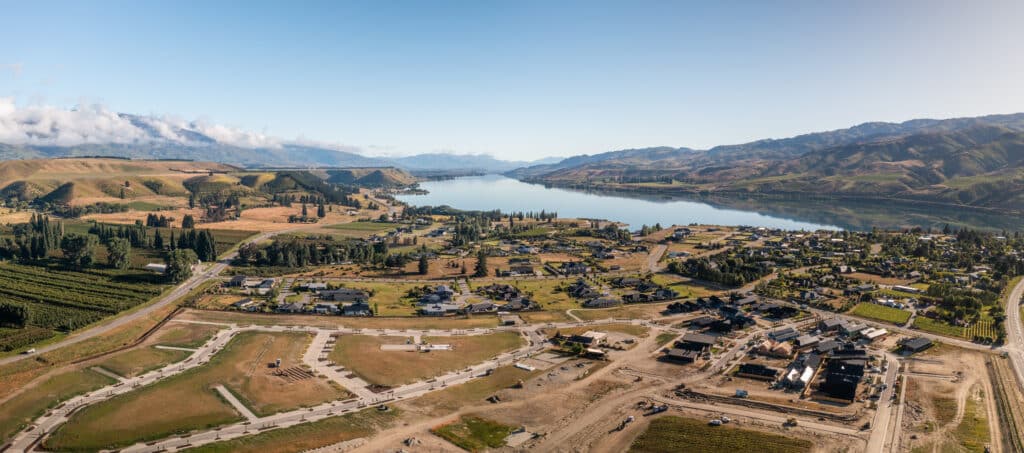
Wooing Tree Estate, Cromwell
Veros initially met with the owners of the Wooing Tree Vineyard in late-2018. They owned a wonderfully situated property but lacked the experience, and capacity to advance their vision for a development. We believed in their vision and the potential to create a high-quality master planned development that would sit apart from other developments in the Central Otago area.
Following a due diligence period, Veros structured an investor group to partner with owners and facilitated a development agreement that formed the Wooing Tree Development Partnership. We have since led the project as full-service Development Managers and worked closely with a local team of consultants. A satisfying milestone was having the masterplan consent approved as one of the first projects in the country under the Covid Recovery (Fast Track) Act. This has meant that we’ve been able to substantially speed up housing delivery. The result? Wooing Tree Estate – a high-quality and highly desirable new neighbourhood in the heart of Cromwell which has lifted the presence and brand of the town in Central Otago as a place to live. We have really enjoyed applying our development experience in cohesively blending the urban streetscape and infrastructure with architecture and landscaping in a style that is quintessentially Central Otago.
The first two stages at Wooing Tree Estate are now complete and it’s great to see our early residents moving in and enjoying this wonderful new neighbourhood. Despite a noticeable drop in purchaser enquiry throughout 2022, sales have continued and we’re looking forward to constructing Stage 3 throughout 2023. We’re also excited to see a new landmark Wooing Tree cellar door building for the Wooing Tree winery come to life, with construction now underway. The cellar door and surrounding boutique retail will be the centerpiece of this development and ensure the Wooing Tree winery remains in its rightful place at the heart of the neighbourhood for years to come.
Wooing Tree Estate has been a success story on so many levels. It has been rewarding to deliver such a high-quality new neighbourhood that we feel has lifted the bar in terms of comprehensive design in the region.
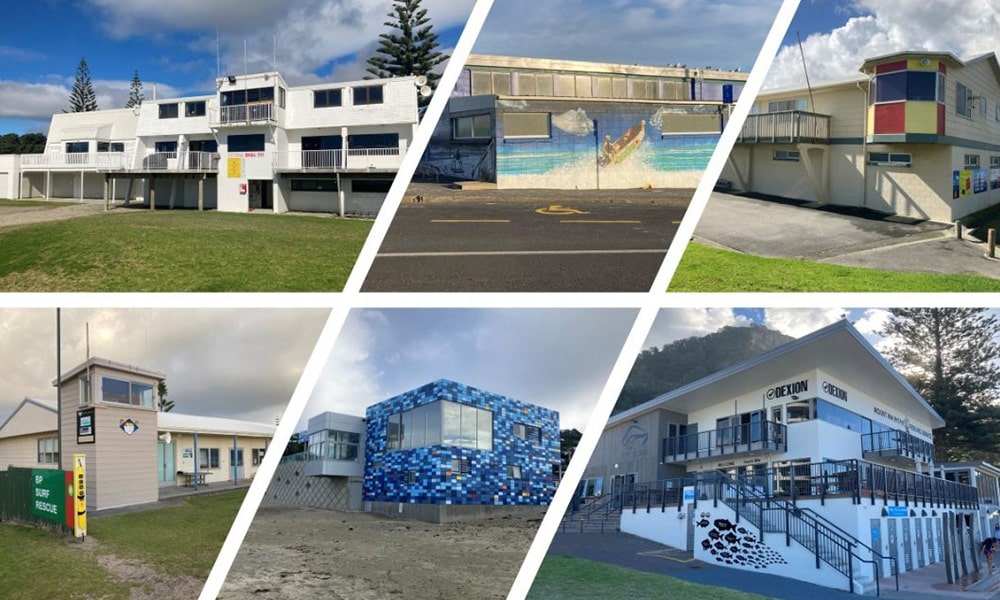
Surf Lifesaving New Zealand Capital Works Investment and Facilities Management Plan
We have been working closely with one of New Zealand’s iconic brand and organisations, Surf Life Saving New Zealand (SLSNZ), for several years now. Kicking off in 2020, our team played a key role in securing over $25m in top-up funding to accelerate the delivery and completion of surf lifesaving upgrades and new club buildings across New Zealand. Not long after, SLSNZ engaged our team to conduct a nationwide assessment of all 74 member club’s lifesaving facilities, and then develop a long-term facilities management plan.
The purpose of this work was to understand the long-term needs and priorities of frontline SLSNZ infrastructure to inform future decisions on how to best distribute annual government funding for capital projects. With chronically underfunded facilities and a heavy reliance on volunteer time, SLSNZ sought to maximise the effectiveness and impact of frontline water safety and response services on an affordable and sustainable basis.
Our work involved the development of a specific assessment framework and methodology that formed the foundation of an effective and affordable nationwide assessment. This framework gave consideration to the condition of existing frontline surf lifesaving service buildings, their ability to service current and future service needs, and the organisation’s beach safety/hazard research and ratings.
74 SLSNZ member club facilities from Far North to Oreti were inspected by Development Manager and Property Advisor Scott Beaumont. Individual assessment reports were prepared and then findings were also consolidated into a Long-Term Facilities Management Plan that included each member club’s plans and aspirations.
The team’s combined expert property asset and project delivery knowledge were contributing factors to the success of establishing a tailored assessment framework and process to evaluate the condition of facilities and identify where funding should be prioritised.
This ongoing project has given our team a real and deeper appreciation for the work the surf clubs undertake and their funding requirements. With so many worthy surf clubs, we continue to work with SLSNZ to help as many as possible gain funding for their projects.
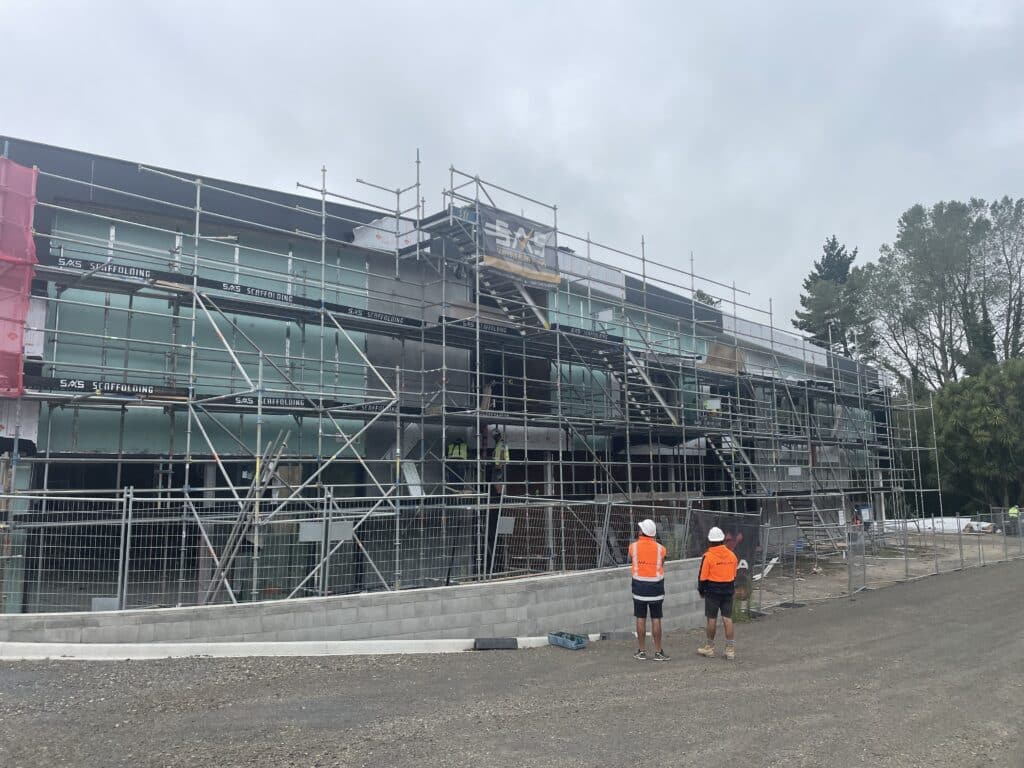
Tokoroa Trades Training Centre
From the outset it was clear Tokoroa Integrated Trades Training Centre would have an immediate and transformative positive impact on the South Waikato community. The centre is a purpose-built campus catering for the key local sectors including farming, engineering, construction, manufacturing, and logistics.
Occupied by national education provider Te Pūkenga the education facility will bring much-needed tertiary education opportunities in South Waikato. The training provided in the facility is tailored to align with the needs and core sectors of the local economy when operating. Once operating it is expected to train and place around 500 students each year into much-needed skilled roles within the districts of South Waikato.
Funded by the South Waikato Investment Fund Trust (SWIFT), Kānoa, and Momentum Waikato this is truly a project being delivered by the community for the community. Its also an important project as at around $15m project value, it is the largest commercial building to be constructed in Tokoroa for some time, and being located on a prominent corner on the entrance of town will provide the Tokoroa with renewed vitality.
‘We make projects real’ is our motto and it’s certainly been the case for this project. We have been at the forefront of securing government funding for this crucial project and our Project Management team has also been leading the construction of the building through challenging times for the industry in Covid-19 with lock-downs and long lead times and material shortages.
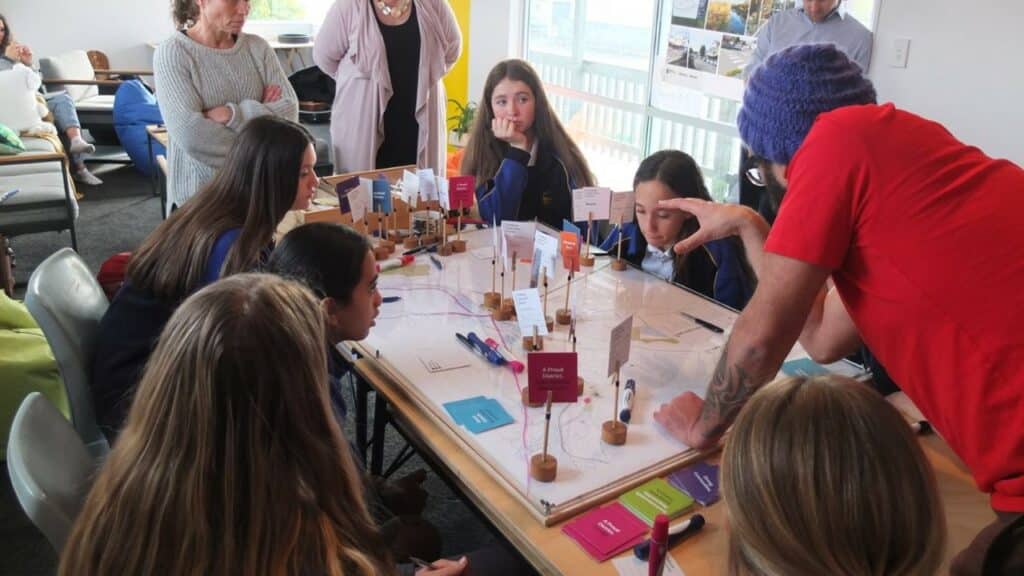
Central Hawke’s Bay District
In the past ten years, Central Hawkes Bay has experienced what many other smaller provincial Councils have – strong growth after a long period of little or no growth. Like many other areas of provincial New Zealand, Central Hawkes Bay has shaken the “zombie town” label and experienced a renaissance with increased migration and demand for the regional New Zealand lifestyle and community. Throughout 2020, Veros, partnering with Isthmus and VCV Consulting, developed an Integrated Spatial Plan (ISP) for Waipāwa, Waipukurau, and Ōtāne. This Spatial Plan sets out a 30-year growth plan that aligns with Project Thrive, Council’s community outcome framework. The process included co-design workshops, facilitated by Veros Strategic Projects Director Adele Hadfield, which included the entire community right from the outset. The success of the project is measured in its ongoing delivery by the Council. The ISP continues to be the compass for Council and the community when it comes to investment decisions to support growth and change in the district.
Following the delivery of the ISP, Veros has worked with the team at Council to develop a Destination Management Plan which set out clear actions to support enhanced visitation to the district. Our Strategic Advisory team led the Thriving Spaces and Places project which developed a set of open space, activity, and facilities strategies and plans, including the district’s first-ever complete set of Reserve Management Plans. Our team has also delivered community plans for Tikokino and Ōtāne using a co-design process that highlighted the distinctive elements of each community – clearly articulating to Council and other organisations the aspirations of each township.
The team at Veros continues to work with Council on a number of projects, becoming a trusted partner for the amazing team at Central Hawke’s Bay District Council.
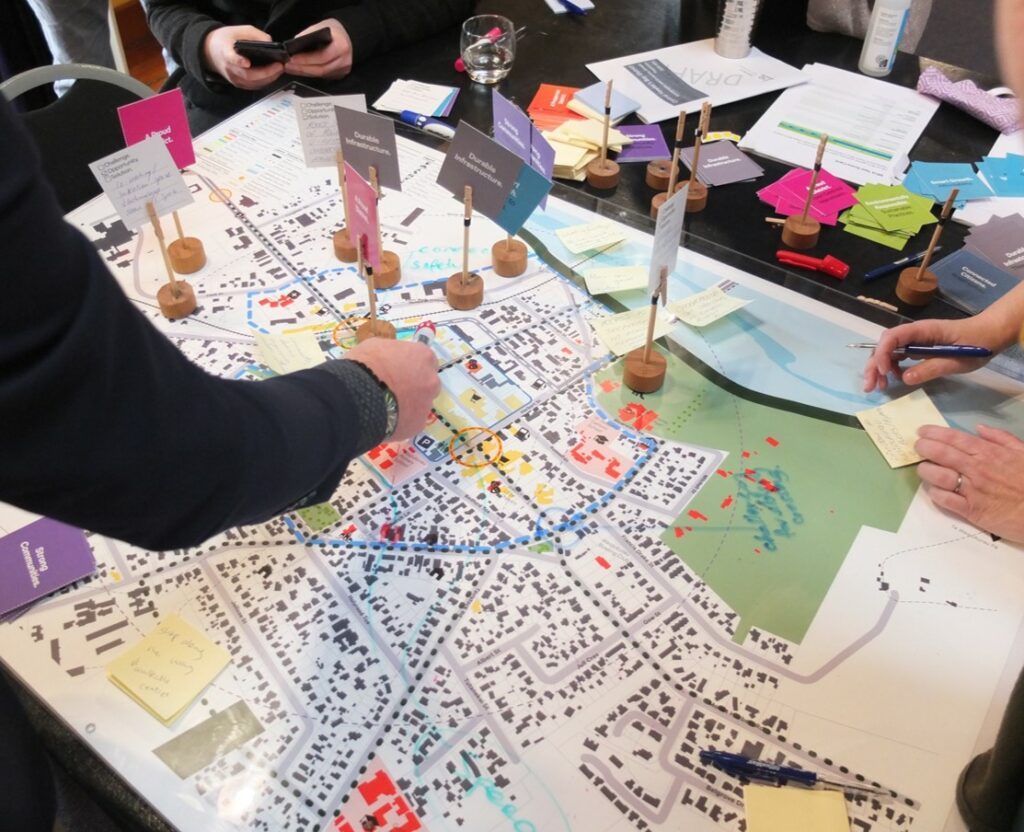
Looking to the future
We’ve certainly experienced some extremes over the last few years and as a result we expect dynamic economic conditions to continue for some time. In areas that have been affected by weather events and cyclones there has been even greater disruption and we will soon see the impacts of recovery efforts play out. There’s a range of economic commentary and forecasting out there that provides data-based assessments of what’s to come. Most point to the likelihood of a stabilisation or shrinking economy in the first half of 2023 with shallow growth to follow over the rest of 2023 and through 2024 and 2025.
Construction and housing markets across New Zealand are already feeling the effects of sustained cost escalation, sharp increases in interest rates, flat or declining residential and commercial values, labour shortages, severe drop offs in residential housing and land presales, and increased lending constraints for development projects. Not to mention the rapidly changing regulatory environment adding ever more complexity into the planning and development framework. Similar conditions and challenges are evident across the country. We expect development across the residential sector to slow significantly when compared to the highs of 2022 – which saw the busy delivery of the unprecedented presales demand through 2021. And while the market dials have changed, the housing crisis and deep-seated pressure points across housing and accommodation in New Zealand have not gone away. We need continued action to deliver housing responses right across the regions of New Zealand to meet the needs of the country. Despite this economic downturn, we are confident that regional New Zealand will remain a popular location and the recent spike of economic activity and changes to how we work (triggered by the pandemic) have reinvigorated the regions for the foreseeable future.
Throughout the last five years we have experienced an unprecedented time of regulatory reform. National policy statements in natural hazards, freshwater, productive land, and indigenous biodiversity alongside impending resource management and local government reforms to name a few. Compounding this has been the added conservatism and cost associated with development finance in both bank and non-bank funders. It is undoubtedly more complex than ever to translate an idea into a reality. It’s also more important than ever to put knowledgeable and experienced people at the centre of projects and as a result seeing more and more demand for our support from a diverse range of clients. Having a team who live and breathe property and are embedded in the industry is paramount to ensuring a project’s success.
The fundamentals that support ongoing growth and development in regional New Zealand remain sound. Whilst we are undoubtedly experiencing increased economic headwinds, this in itself is presenting some unique and exciting opportunities across New Zealand.
Featured News Articles
Exploring the challenges facing New…
Join us in celebrating Mike…
Last week our team joined…
At the end of last…
Last week, our team embarked…
Last night we celebrated the…
For the past decade, Veros…
For the past decade Michelle…
Having worked on huge developments…
Hailing from the Waimea Plains…
The Veros Project Management team…
We are extremely pleased to…